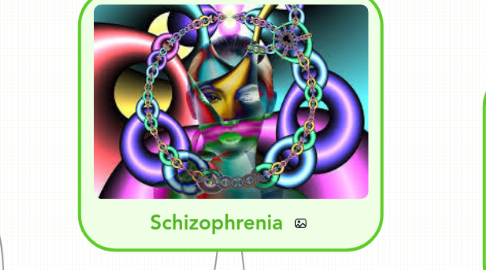
1. Symptoms
1.1. Positive
1.1.1. Delusions
1.1.2. Hallucinations
1.2. Negative
1.2.1. Poverty of speech
1.2.2. Lack of emotion
1.2.3. Catatonia
1.2.4. Social Isolation
2. Treatments
2.1. Biological Treatment: Drug Therapy
2.1.1. Examples of drugs
2.1.1.1. Side Effects
2.1.1.1.1. Low Compliance
2.1.2. How do the drugs work?
2.1.2.1. Not a Cure
2.1.2.1.1. CBT May be better
2.1.3. What do the drugs do?
2.1.3.1. Positive Symptoms Only
2.1.4. How often are they taken?
2.1.5. How long do they take to work?
2.1.5.1. Doesn't work for all
2.2. Social Treatment: ACT
2.2.1. Where?
2.2.1.1. Normal Lifestyle
2.2.1.2. Problems reduced
2.2.1.3. Preferred?
2.2.1.4. May not be prepared
2.2.2. Who?
2.2.2.1. Strain on family
2.2.3. What?
2.2.3.1. Under-funding
2.2.3.1.1. Issue for Rural Areas
2.2.3.2. Medication issues
2.2.4. Why?
2.2.4.1. Solves lack of hospital beds
3. Explanations
3.1. Biological Explanation: Dopamine Hypothesis
3.1.1. Excess Dopamine
3.1.1.1. Cause & Effect
3.1.1.2. Antipsychotics: Supporting Evidence
3.1.1.2.1. Take time to work
3.1.1.3. Positive Correlation
3.1.2. Dopamine Synapses
3.1.2.1. Evidence from PET Scans
3.1.3. Related Symptoms
3.1.3.1. Supporting Evidence
3.1.4. Mesolimbic Pathway
3.1.5. Mid-Brain to Frontal Lobes
3.2. Social Explanation: Environmental Breeder
3.2.1. Lower Social Class Risk
3.2.2. Lower Class = Stress
3.2.2.1. Exposure to Infection & Stress
3.2.3. Stress = Schizophrenia
3.2.4. Low Class = Higher Schizophrenia
3.2.4.1. Supporting Evidence
3.2.4.1.1. Contradictory Evidence
3.2.4.2. Evidence from Immigrants
3.2.4.3. Social Drift?
